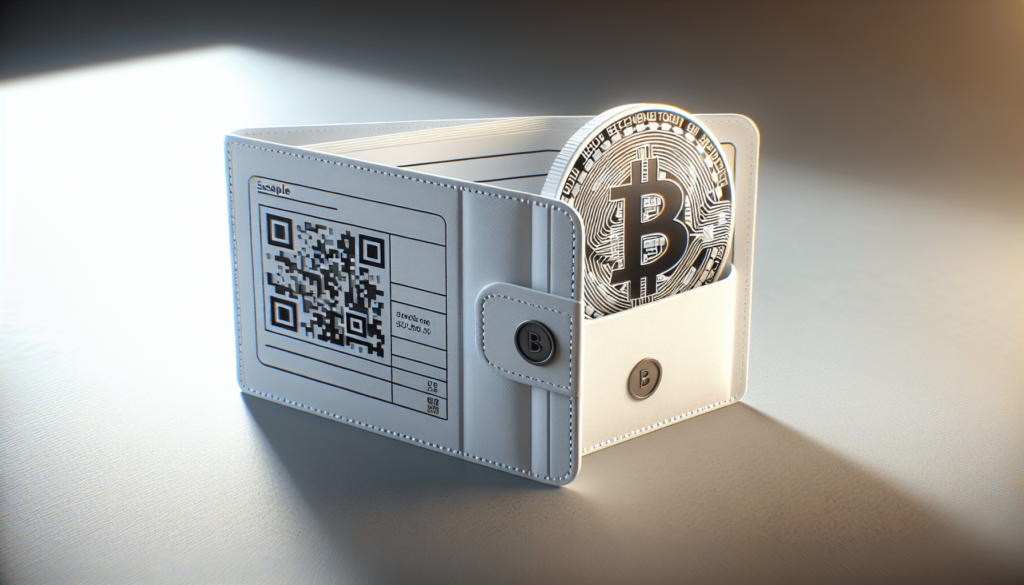Understanding the Concept of a Paper Wallet

Welcome to the world of cryptocurrency! Today, we will dive into the concept of a paper wallet, a secure and offline way to store your digital assets. A paper wallet is essentially a physical document that contains all the necessary information needed to access and manage your cryptocurrencies, providing an added layer of security against hacking or theft. This article will explore the benefits of using a paper wallet, how to create one, and tips for keeping it safe. Get ready to take your crypto storage to the next level with a paper wallet!
Understanding the Concept of a Paper Wallet
What is a paper wallet? A paper wallet is a form of storing cryptocurrencies offline in a physical document. It usually includes the public and private keys required to access and manage your digital assets. While it may seem old-fashioned in this digital age, paper wallets offer a secure way to safeguard your cryptocurrencies from online threats such as hackers and malware.

How does a paper wallet work?
To create a paper wallet, you need to generate a pair of cryptographic keys – a public key for receiving funds and a private key for spending or transferring funds. These keys are usually printed in the form of QR codes on a paper document. The public key allows others to send cryptocurrencies to your wallet, while the private key gives you access to authorize transactions.
Public key
The public key is essentially your wallet address, which you share with others to receive funds. It is safe to share this key with anyone as it only allows others to send cryptocurrencies to your wallet without compromising your funds.
Private key
The private key is like the password to your wallet, allowing you to access and manage your cryptocurrencies. It is crucial to keep your private key confidential and secure to prevent unauthorized access to your digital assets.
Pros and cons of using a paper wallet
Pros
- Security: Paper wallets offer a high level of security as they are immune to online threats such as hacking and malware.
- Offline storage: Storing cryptocurrencies offline in a physical document reduces the risk of cyber-attacks and theft.
- Control: With a paper wallet, you have full control over your private keys, allowing you to manage your digital assets independently.
Cons
- Physical vulnerability: Paper wallets can be damaged, lost, or stolen, compromising the security of your cryptocurrencies.
- Inconvenience: Redeeming funds from a paper wallet can be cumbersome and time-consuming compared to online wallets.
- Lack of backup: If you lose your paper wallet and fail to make a backup, you may lose access to your digital assets permanently.
How to create a paper wallet
Creating a paper wallet is a simple process that involves generating and printing your key pair securely. Follow these steps to create your paper wallet:
Step 1: Choose a reliable paper wallet generator
Select a trusted paper wallet generator such as Bitaddress.org or WalletGenerator.net to ensure the security and legitimacy of your key pair generation.
Step 2: Generate your key pair
Use the paper wallet generator to create a new wallet by generating your public and private keys. Make sure to do this securely on an offline device to prevent exposure to online threats.
Step 3: Print your paper wallet
Print your public and private keys along with the QR codes on a secure paper document. Make multiple copies of your paper wallet and store them in different secure locations for backup purposes.
Step 4: Secure your paper wallet
Protect your paper wallet from physical damage, theft, or loss by storing it in a secure and waterproof container. Consider laminating your paper wallet for added protection against wear and tear.
How to use a paper wallet
Once you have created your paper wallet, you can start using it to send and receive cryptocurrencies securely. Follow these steps to use your paper wallet effectively:
Receiving funds
Share your public key (wallet address) with others to receive cryptocurrencies to your paper wallet. You can receive funds by providing your public key as a payment address for transactions.
Sending funds
To send cryptocurrencies from your paper wallet, you need to import your private key into a compatible wallet or software. Use the private key to authorize transactions and transfer funds to other wallet addresses securely.
Checking balance
You can check the balance of your paper wallet by using a blockchain explorer or a compatible wallet software. Enter your public key to view the transaction history and current balance of your cryptocurrencies.

Tips for securing your paper wallet
To ensure the safety and security of your paper wallet, consider implementing the following tips:
Backup your paper wallet
Create multiple copies of your paper wallet and store them in different secure locations. Make sure to keep your backups updated regularly to prevent loss of access to your digital assets.
Use a secure storage method
Store your paper wallet in a secure, waterproof container to protect it from physical damage, theft, or loss. Consider using a fireproof safe or a safety deposit box for added security.
Avoid sharing your private key
Keep your private key confidential and avoid sharing it with anyone. Your private key is essential for accessing and managing your digital assets, so make sure to protect it from unauthorized access.
Regularly check your paper wallet
Periodically check the condition of your paper wallet to ensure that it is intact and readable. If you notice any signs of damage or wear, consider creating a new paper wallet and transferring your funds for security.
Conclusion
In conclusion, a paper wallet is a secure and offline way to store your cryptocurrencies safely. By understanding how a paper wallet works, its pros and cons, and best practices for creating and using one, you can safeguard your digital assets effectively. Remember to keep your paper wallet secure, make regular backups, and stay vigilant against potential threats to ensure the safety of your cryptocurrencies.








